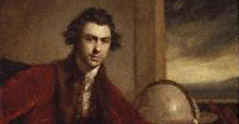|
THE CONWAY LIBRARY
Introduction to Part 4 - Scultpture: 15th to 20th Centuries
Sculpture of the 15th – 19th centuries is arranged (1) by century, (2) by nationality, and (3) by artist, or when anonymous or unattributed, by type and location.
A different system is applied to 20thcentury sculpture (see below).
Ivories, Coins and Medals, Seals and Metalwork have been kept separate from the general Sculpture arrangement and appended at the end of this part.
Sculpture – 15th – 19th centuries
(1) Century – artists are filed according to their date of birth. If their lives span two centuries, the deciding factor is whether they were born before or after 75 of the earlier one. For example, Ernst-Barlach, though active for the most part in the 20th century, is filed with the 19th century, because he was born in 1870. Michelangelo, born in 1475, is similarly filed as 15th century.
(2) Nationality – in most cases this is the country of an artist’s birth, but in exceptional if sometimes prominent cases, as for example that of Giovanni da Bologna, who is classed as an Italian sculptor, it is the country of adoption, or the one in which an artist predominantly worked which has been chosen.
In the case of anonymous or unattributed work an object which can with reasonable certainty be assigned a particular national school, will be so filed. Where the origins of the piece are uncertain it may be filed according to its location, if this is “time-sanctioned”, eg, the case of a tomb by an immigrant sculptor of uncertain origin, in a church for which it was originally intended, would be filed according to its location. Whereas an object of uncertain national origin in a museum of private collection will be placed according to the most probable nation of origin, or the one most recently ascribed to it in art-historical literature.
(3) Artist, Type and Location – filing by artist depends on documentary or historical authentification, but is often bedevilled by changes in scholarship. This problem, which may to some extent be resolved for the library user by an alternative index by location, can never be totally rationalised on the shelves. The arrangement in the Conway Library to some extent records changes of opinion about authorship. Objects in public collections, for example, will be filed according to the attributions of official cataloguers, unless the librarian has been overwhelmingly convinced by some alternative view. In the case of bequests of photographs, particularly in that of the collection formed by Rupert Gunnis, the attributions of the donor have been adhered to. Therefore, on occasion an object may be represented in a variety of contexts, though an attempt is usually made to ensure that illustrations of a reasonable quality are filed in the most obvious place for retrieval.
Arrangement by type in the anonymous sections, which follow on after the named artist sequences in each Century/Nationality group, presents fewer problems. The major classifications are Religious Sculpture, Tombs, and Secular Sculpture, in that order. Tombs are organised by location. In the secular and religious sections, there is subdivision into the forms or subjects prevalent in the century in question, and within these groups the material is organised by location.
Location - three sorts of location are arranged sequentially. Permanent or semi-permanent locations such as churches, public collections etc., come first, followed in this order by objects in private collections and objects in Sales and commercial galleries.
Sculpture – 20th Century
In this area there is no organisation by nationality. The whole area is arranged alphabetically, by artists’ names, or, within this sequence, under national schools (this occasionally means location), so that anonymous and unattributed French works, for example, are included under French School, appearing in the sequence between the sculptors Wallace French and Jean Freour.
Each artists’ works are arranged chronologically, if a dependable chronology exists, or according to categories such as material (ie wood, bronze etc.), form (ie relief, free-standing, stabile, mobile etc.), or subject matter. Sometimes these subdivisions by type are combined with the chronological arrangement.
Ivories, Coins and Medals, Seals and Metalwork
These are organised according to the same principles as the pre-20thcentury sculpture, ie Century, Nationality, Artist, or type, in the case of ivories.
<back
|
|















